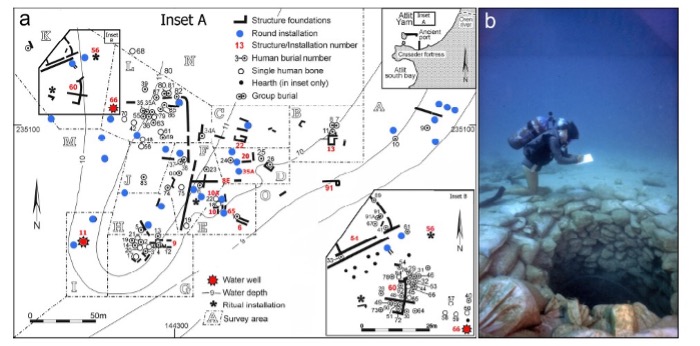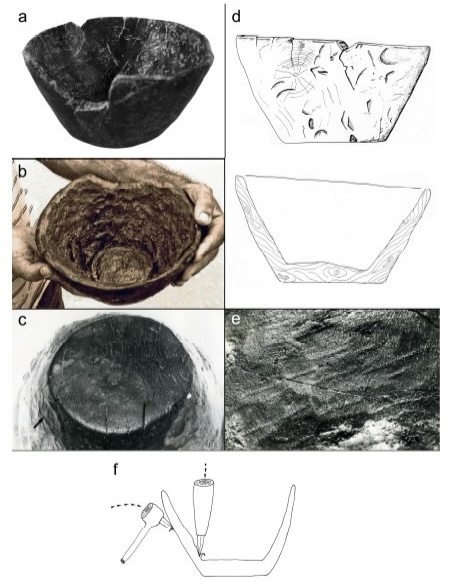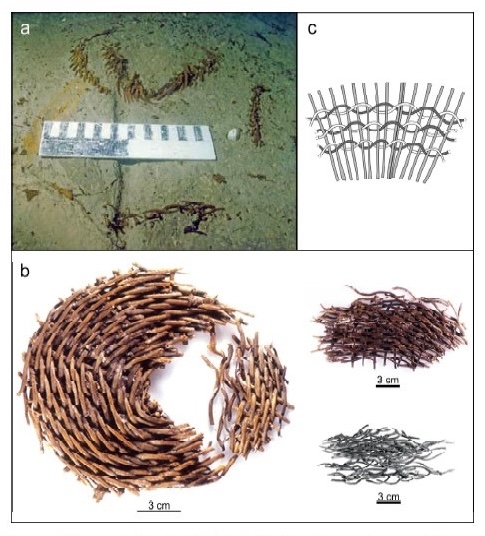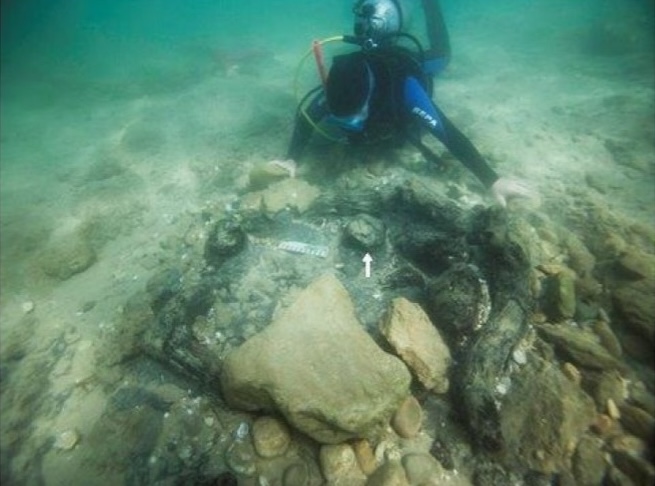Iliad partner publishes groundbreaking maritime archaeology research on submerged prehistoric sites
January 9th, 2024
Researchers at the University of Haifa, a partner in the EU-funded Iliad project, published 6,600 to 9,300-year-old findings, primarily wooden objects and other organic materials, from submerged prehistoric sites discovered, surveyed and excavated by Prof. Ehud Galili off the coast of the Carmel region in northern Israel.

A plan of Atlit-Yam and the location of Well S.11 and Pit S.32/A; (b) Well S.11 | Photo By: E. Galili and I. Grinberg
The paper, titled “The Unseen Record: Ninth-Seventh Millennia Cal. BP Wooden and Basketry objects from Submerged Settlements off the Carmel Coast, Israel”, and written by Prof. Danny Rosenberg and Prof. Galili of the University of Haifa and Prof. Dafna Langgut of Tel Aviv University, was published on December 5, 2023, in the scientific journal Forests.
“The waterlogged finds, including bowls, shafts, a wedge, a trough, a pitchfork, logs, a mat, and a basket, were found at sites spanning from the Pre-Pottery Neolithic to Middle Chalcolithic periods (ninth–seventh millennia calibrated years before present), constituting an unprecedented record of prehistoric wood and other perishable materials, providing us with new information about raw material preferences and manufacturing technologies,” the scientists said.

Wooden bowl KS 4 from Kfar Samir’s southern sector: (a,b) the bowl, (c) the outer face of thebase with production marks on the wall (marked in arrow), (d) a drawing of the bowl, (e) tool markscars on the bowl’s exterior, and (f) a proposed reconstruction of the bowl’s shaping | Photo By: E. Galili and Israel Antiquities Authority
The University of Haifa’s role in the Iliad project includes a focus on tourism and Blue Growth, underwater cultural heritage sites and Mediterranean history, through its Department of Maritime Civilizations and related institutes, leading to its acknowledgement of Iliad support in the maritime archaeological research published.
“The aims of the current study are to explore the characteristics of sixteen wooden, matting, and basketry artefacts and other plant materials recovered from the submerged sites along the Carmel Coast,” the researchers said. “Next, we discuss their significance for understanding how organic artefacts were used, their manufacturing procedure, and their contribution to the reconstruction of the early Holocene environment of the Carmel Coast,” they added.

Fragments of basket KS 2 from Kfar Samir’s central sector: (a) the basket in context, (b) the basket after cleaning, and (c) a schematic drawing of the basket’s braiding technique | Photo By: E. Galili and Israel Antiquities Authority
The team stressed that though wood and organic materials were an “essential part of the daily life of almost all human societies”, wood and basketry artefacts rarely survive in the prehistoric record, since exceptional conditions are necessary for them to be preserved and recovered intact. Our knowledge of when and how prehistoric societies used organic raw materials is therefore very limited, the researchers noted, adding that this is the first time that such a collection – including discoveries from the past several decades – was brought together and examined in this context.
Speaking on the importance of such objects, the researchers noted that “these perishable artefacts speak for a rich and versatile array of functions as well as technical cognition.”
Such objects can throw light on raw material preferences, wood carving technologies, ecological and environmental circumstances (e.g., vegetation, sea-level changes), provenance, skeuomorphs (designs mimicking or reflecting the use of earlier raw materials no longer used), and other topics, the team said.

Wooden bowl KC 1 from Hishuley Carmel. (a) a photo of the bowl and (b) drawing of the bowl and sections | Photo By: K. Alaverdian
The objects date primarily from the Early to Middle Chalcolithic period (6600-8000 years ago) and the Pre-Pottery Neolithic C (8500-9300 years ago), when the sea level was significantly lower than today. The finds were covered by a 1- to 2-meter-thick layer of sand underwater soon enough after the settlement sites were inundated, resulting in anaerobic conditions allowing the objects to be preserved in impressively good condition over the course of the intervening millennia. Recent human activities, such as sand quarrying and the construction of marine structures, have removed the sand layer, exposing the submerged prehistoric settlements and the artefacts found in them.
The findings shed light on a “frequently invisible component of the region’s archaeological record” allowing researchers to conclude that wood was a widely accessible and amenable raw material in the region in prehistoric times. This suggests that scholars should “reevaluate the place wooden objects occupied for past communities in the region”, the archaeologists commented.

A structure in Kfar Galim made of wooden branches (possibly a water well) containing three wooden logs. The retrieved log (KG 1) is marked with an arrow | Photo By: I. Grinberg

